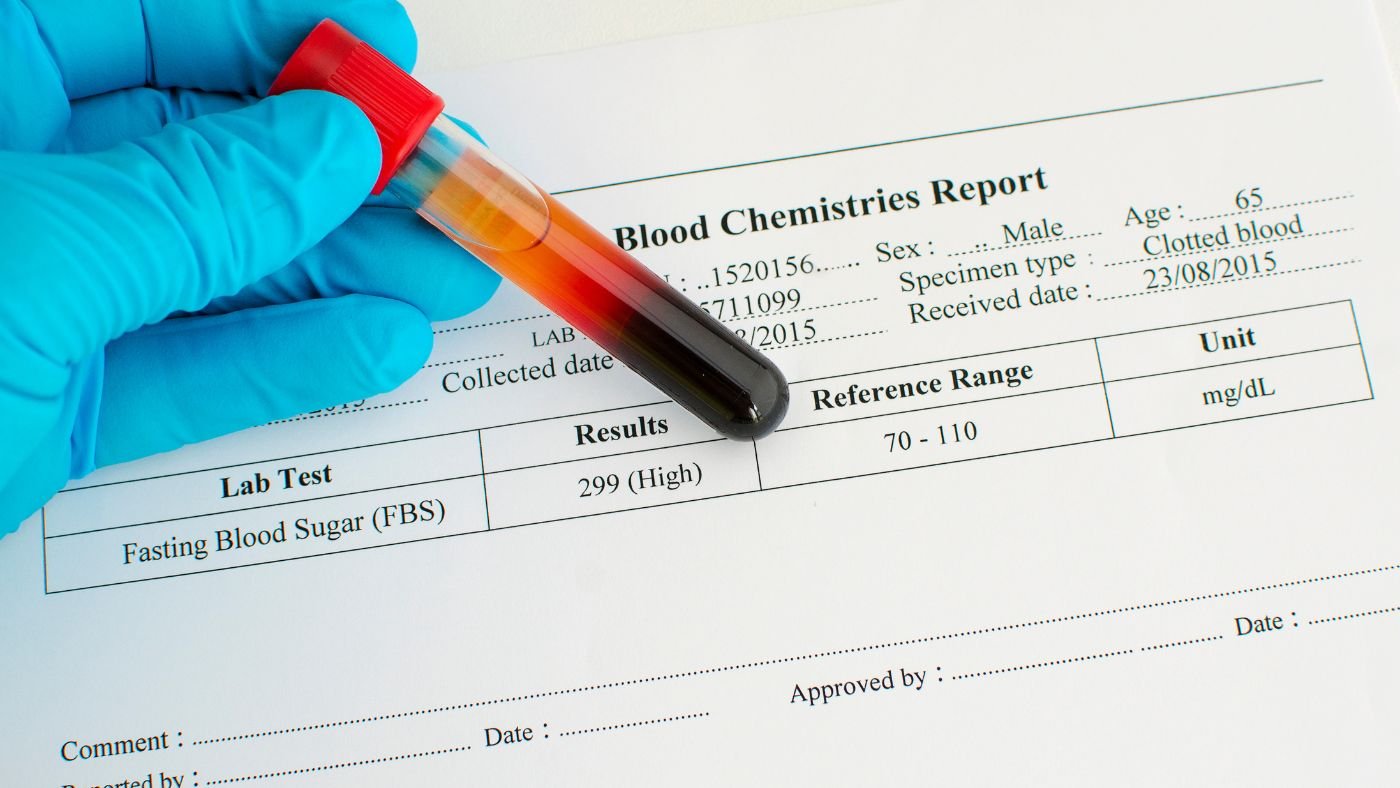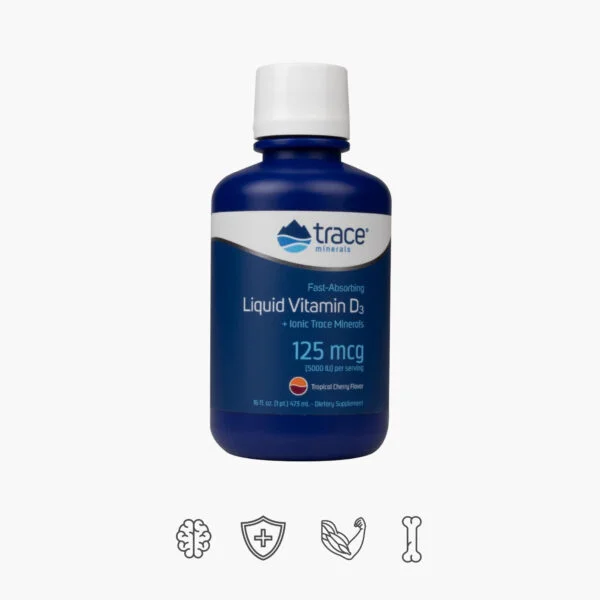Blood sugar is vital. Glucose is the main sugar found in the blood. Glucose comes from the food you eat and is your body's main source of energy. Blood transports glucose to all cells of the body for energy production. We provide all the most important information below and the blood sugar chart will provide you with useful information.
Blood sugar limits are important
We often hear complaints that some have too much sugar and others too little. In both cases, we face health problems. Below we will discuss the most important parts of low, normal and high blood sugar.
Diabetes is defined as a disease in which the body has an impaired ability to produce or respond to the hormone insulin. People with type 1 diabetes have a pancreas that does not produce insulin. People with type 2 diabetes have cells in their bodies that are resistant to insulin or have a pancreas that slows down or stops producing the right amount of insulin (glucose in the blood). Both types of diabetes can cause abnormal glucose levels.
High blood sugar (Hyperglycemia)
Why is high blood sugar bad for us? Glucose is a valuable fuel for all cells in the body when it is in normal levels. But glucose can be a slow-acting poison.
High sugar levels slowly reduce the ability of pancreatic cells to produce insulin. The pancreas overcompensates and insulin levels remain too high. Over time, the pancreas becomes permanently damaged.
High blood sugar can cause changes that lead to hardening of the blood vessels, which doctors call atherosclerosis.
Almost any part of the body can be harmed by too much sugar. Damaged blood vessels cause problems such as:
- Kidney disease or kidney failure
- Heart attacks
- Loss of vision
- Weakened immune system
- Erectile dysfunction
- Nerve damage that causes tingling, pain, or reduced sensation in the legs, feet, and hands
- Slow wound healing
Daily nutrition is extremely important for maintaining optimal blood sugar levels.
For lowering blood sugar
The most commonly used nutrients to lower blood sugar are:
-
Trace minerals strongest Vitamin D3 with minerals, liquid, 473ml.35,90 €Rated 5.00 out of 5 based on 2 customer ratings
-
Trace Minerals ionic Zinc with minerals, 59 ml23,90 €Rated 4.67 out of 5 based on 3 customer ratings
-
Trace Minerals Mega Magnesium 400 mg. Liquid with minerals, 118 ml.29,90 €Rated 5.00 out of 5 based on 11 customer ratings
Low blood sugar (hypoglycaemia)
Blood sugar levels often fluctuate throughout the day. When it falls below 70 mg/dL, it is called low blood sugar. At this level, you must take action to bring it back to normal. Low blood sugar is especially common in people with type 1 diabetes.
It is important to know how to identify low blood sugar as it can be dangerous if left untreated. You'll find what causes low blood sugar and the most common symptoms.
Causes of low blood sugar
There are many reasons why your blood sugar may be too low, but here are the most common:
- Too much insulin
- Intensity and time of physical activity
- Alcohol consumption
- How much fat, protein and fiber is in your food
- Hot and humid weather
- Sudden changes in your schedule
- Maturation period
- Menstruation
Symptoms of low blood sugar
How you react to low blood sugar may be different than how another person with low blood sugar reacts. It is important to know the signs your body is sending. Common symptoms include:
- Rapid heartbeat
- Trembling
- Sweating
- Nervousness or anxiety
- Irritability or confusion
- Dizziness
- Feeling hungry
You may not have any symptoms when your blood sugar is low (hypoglycemia unawareness). If you don't have symptoms, it will be harder to treat low blood sugar early.
Blood sugar table
This blood sugar chart shows normal pre- and postprandial blood glucose levels and recommended HbA1c levels for people with and without diabetes.
| Blood sugar chart | |
|---|---|
| Before the meal | |
| Normal for a person without diabetes | 70–99 mg/dL (3.9–5.5 mmol/L) |
| The official ADA recommendation for a person with diabetes | 80–130 mg/dL (4.4–7.2 mmol/L) |
| 1-2 hours after a meal | |
| Normal for a person without diabetes | Less than 140 mg/dL (7.8 mmol/L) |
| The official ADA recommendation for a person with diabetes | Less than 180 mg/dL (10.0 mmol/L) |
| HbA1c | |
| Normal for a person without diabetes | Less than 5.7% |
| The official ADA recommendation for a person with diabetes | Less than 7.0% |
ADA - American Diabetes Association
The most commonly used supplements are to increase sugar levels
The most commonly used nutrients to increase blood sugar are:
-
Sale Product on saleGarden of life Vitamin Code RAW VITAMIN C - Vitamin C with antioxidants, probiotics and enzymes, complex, 60 vegan capsules
39,90 €Original price was: 39,90 €.25,90 €Current price is: 25,90 €.Rated 5.00 out of 5 based on 2 customer ratings -
Garden of life Vitamin Code RAW B-COMPLEX – vitamins of group B complete with antioxidants, probiotics and enzymes. Bioactive complex, 60 vegcapsules39,90 €Rated 5.00 out of 5 based on 2 customer ratings
Sugar and supplements
Often people use supplements to improve their health, but it is important to note that only natural supplements are a good solution. More about this – 9 surprising differences between natural and synthetic vitamins
Fasting blood sugar
Fasting blood sugar (sometimes called fasting plasma glucose or FPG) is the blood sugar measured after fasting (without eating or drinking anything except water) for at least eight hours.
The purpose of a fasting blood sugar test is to determine how much glucose (sugar) is in the blood, and this test is usually used to check for diabetes or prediabetes. A blood test is usually done in a laboratory, doctor's office or hospital.
A blood sample can be taken from a vein in the arm and collected in a tube, or a blood sample can be taken from a finger.
Best-selling products for lowering blood sugar
-
Sale Product on saleSUPER OMEGA-3 - Norwegian fish oil with Omega-3, 100+30 capsules
67,90 €Original price was: 67,90 €.47,50 €Current price is: 47,50 €.Rated 5.00 out of 5 based on 5 customer ratings -
Sale Product on saleKIKI Health BODY BIOTICS - Good bacteria with organic prebiotics, 30 vegcapsules
35,90 €Original price was: 35,90 €.21,50 €Current price is: 21,50 €.Rated 5.00 out of 5 based on 2 customer ratings -
Garden of life Vitamin Code Raw D3 - Vitamin D3 2000 strength, 60 vegetarian capsules39,90 €Rated 5.00 out of 5 based on 1 customer rating
Normal fasting sugar level for a person with diabetes
Normal fasting blood glucose levels for those without diabetes range from 70 to 99 mg/dL. The American Diabetes Association recommends regular screening for type 2 diabetes starting at age 35. If the results are normal, the examination should be repeated every three years.1
If you have risk factors for diabetes, including being overweight or obese, a family history of type 2 diabetes, or a history of gestational diabetes, you should be screened for diabetes sooner and have repeat tests recommended more often.
Certain races/ethnicities (African-American, Latino, Asian-American, Pacific Islander, or Native American) have been found to be more likely to develop diabetes, and more frequent blood tests are recommended in those countries.
A fasting blood sugar level between 100 and 125 mg/dL indicates prediabetes, which is a condition in which blood sugar levels are higher than "normal" but not high enough to be considered diabetes. Prediabetes is a risk factor for type 2 diabetes, heart disease, and stroke. It is managed with lifestyle changes and, in some cases, medication.
The official recommendation for fasting blood sugar levels for a person with diabetes (ADA)
The American Diabetes Association recommends fasting blood sugar levels between 80 and 130 mg/dL for most pregnant adults with diabetes.
However, fasting blood sugar goals may need to be individualized for certain people based on factors such as duration of diabetes, age and life expectancy, cognitive status, other medical conditions, cardiovascular complications, and hypoglycemia unawareness.
It is important for people with diabetes to discuss their target blood sugar goals with their doctor.
What is a normal postprandial blood sugar level?
Postprandial blood sugar levels in a person without diabetes
A normal blood sugar level is less than 140 mg/dL. A blood sugar level between 140 and 199 mg/dl is considered prediabetes, while a blood sugar level of 200 mg/dl or higher may indicate diabetes. Someone who doesn't have diabetes is unlikely to test their blood sugar. However, one of the screening tests for diabetes is called the oral glucose tolerance test.
(A slightly different version of the oral glucose tolerance test is also used to diagnose gestational diabetes, which develops during pregnancy). For this test, the person must fast overnight and go to the doctor's office or laboratory in the morning. A blood sample will be used to measure fasting blood sugar. The person then drinks a sugary drink containing 75 grams of sugar. After two hours, the blood sugar level is checked again.
Normal postprandial blood sugar levels for diabetics
The Diabetes Association recommends that most pregnant adults with diabetes keep their blood sugar levels below 180 mg/dL 1 to 2 hours after eating. This is usually the highest blood sugar level for a person with diabetes.2
HbA1c
The HbA1C test is a blood test that provides an average blood glucose level over the past three months. Other names for this test are hemoglobin A1C, A1C, glycated hemoglobin, and glycosylated hemoglobin test. A person does not need to fast before taking an HbA1C test; in other words, it can be after eating or drinking.
The HbA1C test may not be accurate in some people, including those with anemia and those on HIV treatment, as well as people of African, Mediterranean, or Southeast Asian descent. The HbA1C result is presented as a percentage; the higher the percentage, the higher the blood sugar.
In addition to being a tool for diagnosing diabetes, the HbA1C test is also used to help people with diabetes manage their condition.
Normal HbA1c for a non-diabetic person
For those without diabetes, a normal HbA1C level is less than 5.7%. An A1C of 5.7% to 6.4% indicates prediabetes.
It is recommended that people over 45 or under 45 who are overweight and have one or more risk factors for diabetes have their baseline A1C checked. If the result is normal, A1C should be checked every three years. If the result indicates prediabetes, the A1C should be checked every one to two years.
The official HbA1c ADA recommendation for a person with diabetes
The ADA recommends an hbA1C less than 7% for most pregnant adults with diabetes.
A lower target, such as less than 6.5 percent, may be appropriate for some people who have had diabetes for a shorter period of time, younger people without heart disease, and/or those with type 2 diabetes who are on lifelong treatment. method or metformin.
A higher HbA1C result, such as lower than 8%, may be appropriate for people with a history of severe hypoglycemia, limited life expectancy, advanced diabetes complications, other diseases, or difficulty achieving a lower HbA1C result.
It is important that people with diabetes discuss their blood sugar results with their healthcare professional.
HbA1C levels should be checked two to four times a year for people with diabetes.
Blood sugar chart summary
Blood sugar: Fasting, 2-hour postprandial and HbA1C tests are important tests to diagnose prediabetes and diabetes. Research shows how well a person's diabetes is managed.
If you think you have diabetes, it's important not to try to diagnose yourself at home using inaccurate tests.
There are strict standards and procedures that labs use to diagnose diabetes, so you need to get tested at a reputable lab.
It's also important to talk to your doctor to make sure you understand:
(a) how often you should have certain tests, such as a fasting blood glucose or HbA1C test
(b) what your results mean
c) What are the blood sugar and HbA1C readings
If you haven't been diagnosed with prediabetes or diabetes before, but your results are higher than "normal," your doctor may recommend other tests and discuss a treatment plan. Treatment may include lifestyle changes such as:
- weight loss
- healthy eating plan
- regular physical activity
You may need to start taking diabetes medication, including insulin. If you have been diagnosed with diabetes, it is recommended that you learn how to check your blood sugar with a meter so that you can determine whether the appropriate treatment plan is in place.
Frequently Asked Questions: Blood Sugar Topic:
What is blood sugar?
Blood sugar, also known as blood glucose, is an important indicator that helps control our health. This is the amount of sugar that is in our blood at the time it is measured. Glucose is our body's main source of energy, so it is important to have the right amount of glucose in the blood.
What is the normal range for blood sugar?
Normal blood sugar ranges from 3.9 to 5.5 mmol/l fasting and up to 7.8 mmol/l after a meal. These numbers may vary slightly depending on the laboratory that performs the test. If your blood sugar is too high or too low, it can lead to health problems such as diabetes or hypoglycemia.
What is a normal blood sugar level in the morning?
In the morning, fasting blood sugar should be between 3.9 and 5.5 mmol/l. This is called "morning basal glucose" and it is an important indicator because it shows how your body regulates blood sugar during the night.
What is the blood sugar level 2 hours after a meal?
Two hours after a meal, blood sugar should be below 7.8 mmol/l. This is important because it shows how your body reacts to the food you've eaten and how it uses glucose for energy.
Please note that these numbers are only general guidelines (best practice) and may vary depending on personal health and other factors. If you have any concerns about your blood sugar level, you should consult a healthcare professional.
It is important to rememberthat everyone's health is individual and there is no common recipe for everyone!
So, if you want to know what nutrients your body might be lacking right now, health professionals recommend a guide – "Your Day".
- In time, pay attention to the signals sent by your well-being
- Replenish the body with natural minerals, vitamins and nutrients necessary for health.
- Enjoy energy and good mood everyday!

















